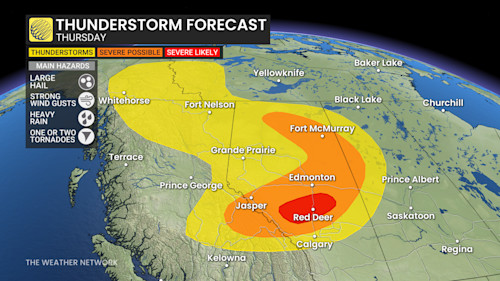Understanding Tornado Risk in Alberta: Recent Trends and Safety

Introduction
Tornadoes are a rare but significant weather phenomenon in Alberta, known for their potential to cause extensive damage. Understanding tornado risk is crucial, especially as climate change may influence weather patterns, potentially increasing tornado occurrences. As Alberta experiences shifts in its climate, awareness of tornado risk becomes more important for residents and local authorities.
Tornado Activity in Alberta
According to Environment and Climate Change Canada, Alberta averages approximately 15 to 20 tornadoes each year, with the peak season typically occurring from June to August. Recently, the province has seen a notable uptick in tornado activity. In July 2023, Alberta experienced multiple tornado events, with one tornado classified as an EF2 causing substantial damage in the southern region. This increase in occurrences raises concerns regarding preparedness and safety measures across communities.
Recent Events and Trends
In a notable event on July 20, 2023, a tornado touched down near the town of Lethbridge, causing significant destruction to residential areas and uprooting trees. Fortunately, quick action from local emergency services and timely alerts helped to minimize injuries, but the aftermath underscores the importance of having effective warning systems and community preparedness plans in place.
The Alberta Severe Weather Management Society and local meteorological services have been urging residents to stay vigilant during severe thunderstorm warnings, as these storms can rapidly develop into tornado-producing systems. With advancements in forecasting technology, the ability to predict the likelihood of tornado formation has improved, allowing for more timely and accurate warnings.
Preparedness and Community Safety
Communities across Alberta are urged to develop and regularly update emergency plans that include tornado safety protocols. These protocols recommend identifying safe shelter locations, such as basements or interior rooms away from windows. Residents should have access to battery-powered radios and emergency kits containing essential items.
Conclusion
The increasing incidents of tornadoes in Alberta highlight the critical need for awareness and preparedness. As climate patterns continue to evolve, residents must take proactive measures to ensure their safety. Local governments and emergency services must also enhance their communication and response strategies to manage tornado risks effectively. By fostering a culture of preparedness, communities can mitigate the impact of these dangerous weather events and safeguard lives. The coming years will likely see more discussions on enhancing tornado readiness, making it essential for residents to stay informed and engaged.









